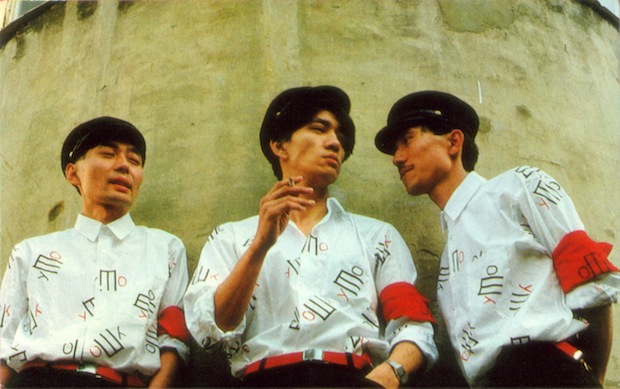“The ‘Net is a waste of time, and that’s exactly what’s right about it.” William Gibson’s cyberpunk novel, Neuromancer, follows the life of protagonist, Case, who is rescued from drug addiction by street samurai, Molly. Gibson, who actually coined the term cyberpunk, when talking about his artistic vision, said that “modern Japan simply was cyberpunk.” In ’80s Tokyo, video game arcades speckled streets, anime coloured television screens and imaginations. Activism was rife, student-led, socialist and anti-authoritarian. The arts scene was similarly excited. Artists reassessed what art should be doing. The skyline was a knife, a bubble, a curve, dumpy, lived in, rockety, and repeated over. This was a city in flux. Landscapes – social, technological, artistic, architectural – were shifting temporally: far into the future. This era gave rise to Tokyo natives, Yellow Magic Orchestra, a band that quickly became considered one of electronic music’s key innovators. Its three principal members are considered pioneers of digital music making and are credited with influencing almost everything, from ambient music to hip-hop to game scores. While their technological innovation and international impact must be praised, we cannot ignore the way they represented their own unique society through their music.
Harumi Hosono, Ryuchi Sakamoto and Yukikiro Takahashi spent the ‘70s dipping their toes into each other’s pools and finally united in ’78. Representative of their surroundings, their first album, Yellow Magic Orchestra, released that same year, is one of painfully playful Gameboy flips of classic riffs. The black-note oriental scale is hammered into a new context. For their sound, all clacks and beeps and vending machine rhythms, made with then cutting-edge equipment – samplers, sequencers and drum machines – the band remain heralded as a group who mapped out music’s cartography. The way noises are layered, stacked up and thrown together in their tracks is an imitation of their architectural surroundings: the carefully constructed but clumsy-looking chaos of Tokyo’s skyline. But it’s all held up by a clear dedication to groove – a heartbeat, maybe – and within five years of formation, Yellow Magic Orchestra had released seven studio albums, only one of which dipped outside the Top 5 in Japan. The band split in 1984. Even though they later admitted that hating each other was the reason for it, at the time they used the Japanese phrase, 散開 (pron. sankai), meaning spreading out, instead of splitting up.
When the band reunited in 1993, they released another album, Technodon. Dedicated to mature house grooves and techno mechanisms, it evidences a more international awareness of and abidance by the rules of contemporary dance music, more stable and across-the-board pleasing. The album cover evidences their playful attitude towards technology. By 1993, technology was no longer only a device for music-making – it was an aesthetic device, too. Flipping a boring ownership issue on its head, Technodon was released under a new moniker: NOT YMO or YMO. This focus on typography is a metafictional computer joke wherein the band draws attention to its form; it is a cluster of three humans overwritten, or struck over, by technology.
Our favourite track, “Floating Away”, features entirely drum-machine-created jazzy, tribal rhythms that relax at the back of the track while obnoxious spy-movie synths and video game blips propel you forward. Lyrically, it is descriptive of ’80s Japanese culture – or, at least, a vision of it. And who narrates the track? Aforementioned author, William Gibson. His twang, smooth, soothing and lackadaisical, narrates your scene: “Broken shackle / You could look down / See the water between your toes / Bare concrete, empty bottles (wrapped in plastic) / A moped against a vending machine / Startlingly organic.” The conditional, “could“, expresses that technological uncertainty and excitement. It is a positive vision of an unfixed world shattering beneath your feet, of switching landscapes, of technology upon technology upon technology. It is cyberpunk.
And thus, this collaboration between Japanese supergroup and American-Canadian author is is a sweet combination of cultures celebrating their common agenda: to use, represent and influence future with art. Ironically, by 1993, the near-future that cyberpunk’s literature and YMO’s music sought to represent in the eighties was here. The genre’s heyday had been, gone and arrived. “Floating Away” is, thus, a nostalgic track. It is nostalgic for a past that looked to the future; a past that viewed the years to come with enthusiasm.




